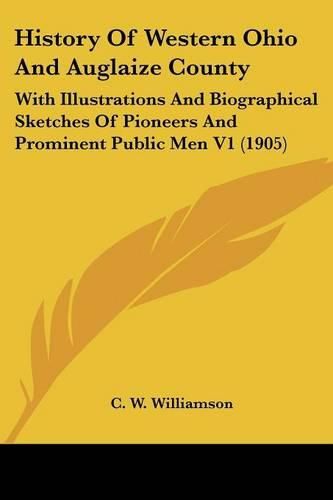Readings Newsletter
Become a Readings Member to make your shopping experience even easier.
Sign in or sign up for free!
You’re not far away from qualifying for FREE standard shipping within Australia
You’ve qualified for FREE standard shipping within Australia
The cart is loading…






Purchase of this book includes free trial access to www.million-books.com where you can read more than a million books for free. This is an OCR edition with typos. Excerpt from book: CHAPTER II. INDIAN OCCUPATION OF OHIO. . The origin of the. North American Indian is unknown, Many theories have ben advanced to account for the red man’s presence in the New World, but most of them have been vague and unsatisfactory. Our knowledge of the Ohio Indians does not extend beyond the year 1650. It is difficult to realize that the third state in the Union, now occupied by prosperous cities, villages and cultivated fields, was peopled only two and a half centuries ago by a race of savages, who were not only wild rovers of the forest, but were unskilled in aught, save warfare, and the excitement of the chase. The Ohio of 1650, we assume to have been a wilderness of vast extent, occupied in the northern part by a nation of Indians, called the Eries. whose villages skirted the southern shore of Lake Erie. The wanderings of the Indians were confined, chiefly, to that portion of the state, as they depended for their sustenance on fish taken from the lake, and game taken from the dense- forest skirting the shore. At that time the Wyandots (or Hurons) held the peninsula between Lakes Huron, Erie and Ontario, and their hunting excursions extended as far south as the regions about the mouths of the Maumee river, while a tribe called the Andastes occupied the villages of the Allegheny and upper Ohio. In 1655 the Five Nations or Iroquois, as the French called them, attacked the western tribes, and their extinction soon followed. After the great massacre, the remnant of survivors was incorporated with other tribes, to which they fled for refuge. Nothing in Indian history is more imposing than the Confederacy of the Five Nations, the Mohawks. Oneidas, Onondagas, and Senecas. This great league of red men exercised for many years a fierce kind of despotism over othe…
$9.00 standard shipping within Australia
FREE standard shipping within Australia for orders over $100.00
Express & International shipping calculated at checkout
Purchase of this book includes free trial access to www.million-books.com where you can read more than a million books for free. This is an OCR edition with typos. Excerpt from book: CHAPTER II. INDIAN OCCUPATION OF OHIO. . The origin of the. North American Indian is unknown, Many theories have ben advanced to account for the red man’s presence in the New World, but most of them have been vague and unsatisfactory. Our knowledge of the Ohio Indians does not extend beyond the year 1650. It is difficult to realize that the third state in the Union, now occupied by prosperous cities, villages and cultivated fields, was peopled only two and a half centuries ago by a race of savages, who were not only wild rovers of the forest, but were unskilled in aught, save warfare, and the excitement of the chase. The Ohio of 1650, we assume to have been a wilderness of vast extent, occupied in the northern part by a nation of Indians, called the Eries. whose villages skirted the southern shore of Lake Erie. The wanderings of the Indians were confined, chiefly, to that portion of the state, as they depended for their sustenance on fish taken from the lake, and game taken from the dense- forest skirting the shore. At that time the Wyandots (or Hurons) held the peninsula between Lakes Huron, Erie and Ontario, and their hunting excursions extended as far south as the regions about the mouths of the Maumee river, while a tribe called the Andastes occupied the villages of the Allegheny and upper Ohio. In 1655 the Five Nations or Iroquois, as the French called them, attacked the western tribes, and their extinction soon followed. After the great massacre, the remnant of survivors was incorporated with other tribes, to which they fled for refuge. Nothing in Indian history is more imposing than the Confederacy of the Five Nations, the Mohawks. Oneidas, Onondagas, and Senecas. This great league of red men exercised for many years a fierce kind of despotism over othe…